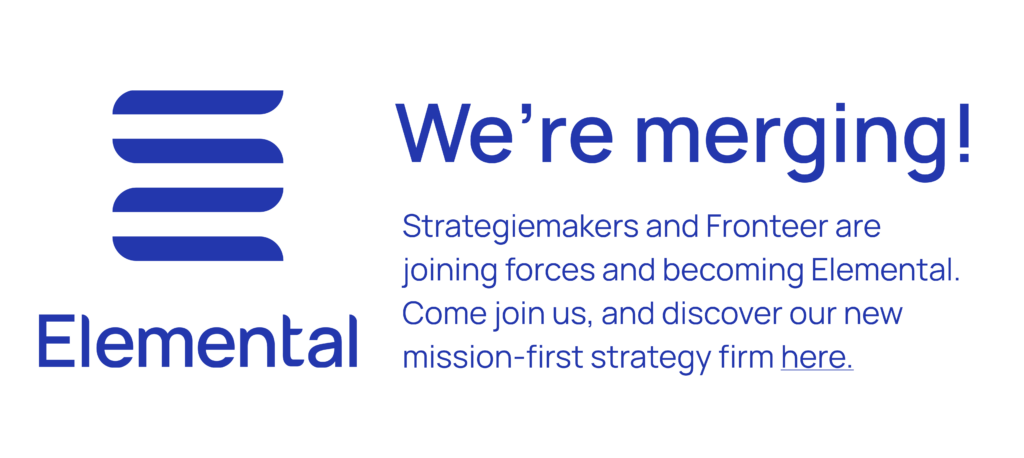The organisational world being subject to trends is nothing new. Just think of the shift in project management approaches in the recent years: prince2, lean management, agile working. Or the emerce of organizational structures such as self-management and holacracy. The driver of these trends is always to work (together) smarter, more efficiently and more effectively. This means that the core of these ways of working or organizing does not so fundamentally differ. Yet there are important different nuances in it. Currently, we as Strategiemakers identify the next movement: working asynchronously. How does working asynchronously differ from the previous trends?
[A] work synchronously
It may sound complicated at first, but the principle is quite simple. When an organization works asynchronously, it means that not all work is done simultaneously. That is not a goal in itself. You consciously consider per organization, per team, per (external) cooperation which joint tasks you will take on synchronously or asynchronously. This way, you can accelerate as an organization, serve your customers better, reduce travel time, increase employee happiness, and so on. You can read more about the benefits of working asynchronously in this blog.
Unique features
Looking at other trends in recent years, [a] synchronous working is very much linked to those. The goal is always to work (together) smarter, more efficiently and more effectively. And yet we see [a] working synchronously as “the next step”. We distinguish three unique characteristics that all three now have momentum to be capitalized within companies. We explain them below.
1. A radically different approach to work
When asynchronous working is really embraced, every employee has the opportunity to take a critical look at the classification of his or her working time. Are you more productive in the evening than in the morning? Do you want to be with your kids every afternoon when they come out of school? Or do you look at the results to which you have committed each week and divide your work week accordingly? Working asynchronously exceeds the current compensation of starting an hour earlier to avoid traffic jams or catch up on the hour in the evening because you went to the dentist in the afternoon.
It’s also not about imitating a working day at the office when you work from home, but about rearranging your team based on the type of work you are doing. Consider, for example, moments that you reserve for “deep work” or answering emails and phone calls. This also requires close coordination within teams, especially when you are jointly responsible for customer contact or other (time-related) services. It also requires that we create more time for these kinds of moments. Not just copy pasting our physical meetings to a digital one, but consider what an optimal physical / digital working day looks like.
2. Diminishing environmental impact
An important economic advantage of, for example, the trend “The New Way of Working” of a few years ago was the reduction of travel costs as soon as every employee chooses to work from home one day a week. Working asynchronously starts a much more fundamental aim, which is to drastically reduce CO2 emissions by reducing travel kilometers and reducing traffic jams to protect the environment.
In the Netherlands a coalition was set up to change the way we travel “anders reizen coalitie”. Since 2015, this coalition, consisting of 50 large companies, has worked hard to decrease the CO2 emissions of business travel in the Netherlands by half. In their recent press release, they argue that “now is the time to go ahead and anchor work regardless of place and time in the new normal”.
Another consequence of working asynchronously may be that companies decide to no longer have a physical office, but to make much more use of multiple, flexible office spaces. It would be a logical consequence of the decision that Facebook recently made for employees to work permanently remotely. In this way, companies make more efficient and conscious use of space, which has a positive effect on the environment.
3. Inclusive organizational culture
Working asynchronously goes hand in hand with asynchronous communication. With asynchronous communication you give the other person the opportunity to answer at the moment (and the place) when it suits him or her best. You respect each other’s time and focus. Organization-wide topics are best communicated asynchronously, so that employees who work from home feel just as involved as those who work from the office. Everyone receives the same type of information in the same way and has equal opportunities to respond to it. In short, asynchronous communication is a much more inclusive form. It became extra important now that we are not all be able to go to the office at the same time. How do we ensure that home workers do not feel left out?
A good example is Basecamp. They have set up a communication guide with 30 rules of thumb. One of these principles demonstrates the power of asynchronous communication:
Speaking only helps who’s in the room, writing helps everyone. This includes people who couldn’t make it, or future employees who join years from now.
Working asynchronously has the same reason as previous trends in (collaboration) and organizational structures, but also has characteristics in which it is unique. There is momentum radically change the way we work, to take serious action in protecting the environment and to increasingly strive for a more inclusive organizational culture. Which companies will lead the way and set a good example?



